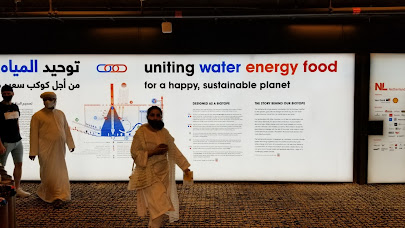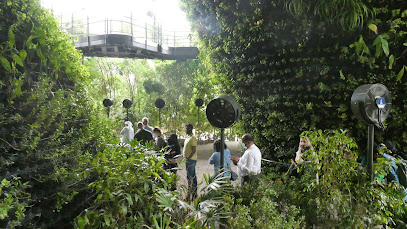While it is now more than a month since I returned from EXPO2020, and there are just two weeks left before the fair ends, I want to highlight a few more of the pavilions that I thought were both interesting and offering lessons for the future.
Three of the most 'sustainable' pavilions are those representing Germany, Netherlands, and Singapore.
Inside the German pavilion, there is a focus on the shift to renewable energy. One exhibit allows a visitor to compare the amount of renewable energy in their country compared to Germany and the rest of the world.
The German Pavilion is presented as 'Campus Germany', with a variety of interactive exhibits to offer a crash course on sustainability. Upon entering, each visitor is given a digital name tag which includes their home country and many of the exhibits are modified accordingly. So, when you examine energy consumption in Germany, it is compared with consumption in your country, etc. On display were many things of interest including innovative renewable building materials, an electric airplane, and an elevator that goes up and down....and sideways.


















